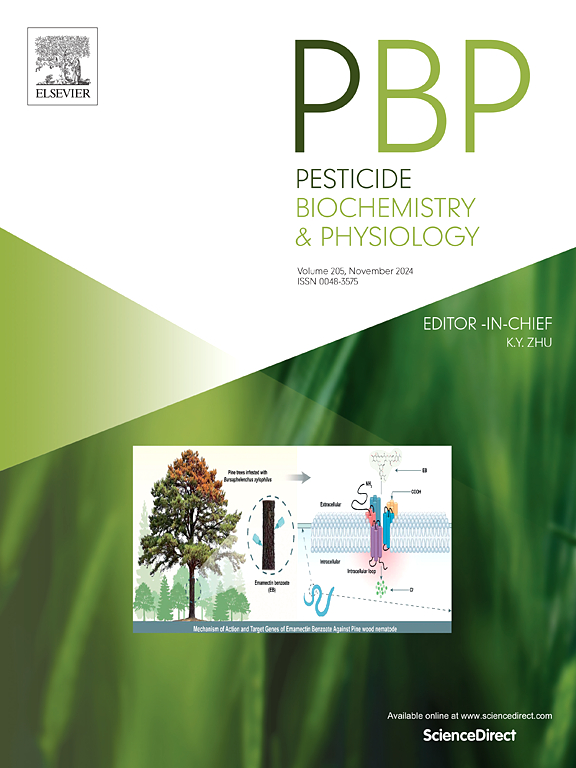Exploring mechanisms of resistance to fludioxonil in Colletotrichum fructicola
IF 4.2
1区 农林科学
Q2 BIOCHEMISTRY & MOLECULAR BIOLOGY
引用次数: 0
Abstract
Colletotrichum fructicola is one of the most important species causing peach anthracnose around the world, including China. Fludioxonil has been effectively applied to control anthracnose disease as well as several important fungal diseases such as gray mold, leaf blight, early blight, corn stem rot, peanut root rot, rice evil seedling disease, and other diseases transmitted through seeds or soil. In this study, 39C. fructicola isolates were collected from different locations in Guizhou Province and Guangdong Province. A sensitive isolate of C. fructicola, previously thought to be naturally resistant to fludioxonil, was unexpectedly detected. No cross-resistance was found for fludioxonil with procymidone, prochloraz, and pyraclostrobin. Significant differences were observed between sensitive and resistant isolates in terms of mycelial growth rate and osmotic sensitivity experiments (4 %, 6 %, and 8 % NaCl), but no significant difference was found for sporulation. A novel mutation I880V was detected in the Os1 protein from one sensitive isolate. Molecular docking was used to explain the reversal of inherent resistance to sensitivity of C. fructicola to fludioxonil. Results showed that the wild type Os1 protein was docked against fludioxonil with a binding energy of −6.8 kj/mol, while it increased to −6.6 kj/mol between the mutated protein and fludioxonil. At the same time, different interactions were observed between wild type and mutated proteins with fludioxonil. These results suggest that the I880V mutation in the Os1 protein changed the conformation of the binding pocket, potentially leading to the reversal from resistance to sensitivity to fludioxonil. These findings are remarkable in demonstrating the fludioxonil resistance mechanism, and further studies such as genetic transformation and a range of molecular investigations are necessary to validate resistance mechanisms, elucidate the molecular pathways involved, and develop effective disease management strategies.

求助全文
约1分钟内获得全文
求助全文
来源期刊
CiteScore
7.00
自引率
8.50%
发文量
238
审稿时长
4.2 months
期刊介绍:
Pesticide Biochemistry and Physiology publishes original scientific articles pertaining to the mode of action of plant protection agents such as insecticides, fungicides, herbicides, and similar compounds, including nonlethal pest control agents, biosynthesis of pheromones, hormones, and plant resistance agents. Manuscripts may include a biochemical, physiological, or molecular study for an understanding of comparative toxicology or selective toxicity of both target and nontarget organisms. Particular interest will be given to studies on the molecular biology of pest control, toxicology, and pesticide resistance.
Research Areas Emphasized Include the Biochemistry and Physiology of:
• Comparative toxicity
• Mode of action
• Pathophysiology
• Plant growth regulators
• Resistance
• Other effects of pesticides on both parasites and hosts.

 求助内容:
求助内容: 应助结果提醒方式:
应助结果提醒方式:


